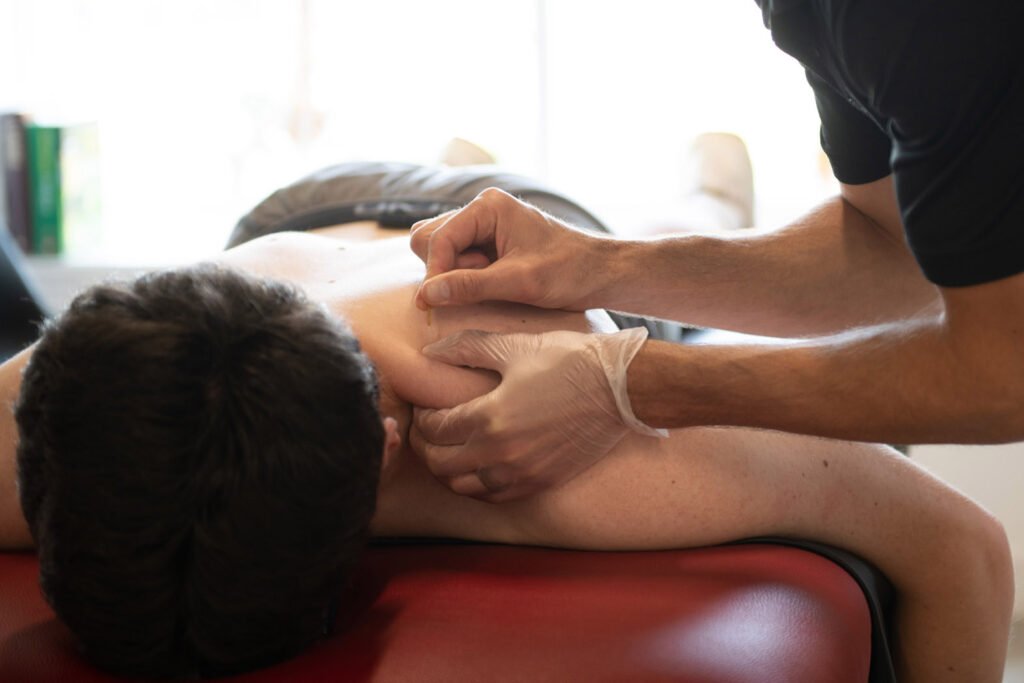Dry Needling is a therapeutic technique used by healthcare professionals to treat musculoskeletal pain and dysfunction. It involves the insertion of a thin, solid, sterile needles into specific points in muscles, often referred to as trigger points or areas of muscle tightness. Unlike acupuncture, which is rooted in traditional Chinese medicine, Dry Needling is based on modern Western medicine principles and focuses on the neuromuscular and musculoskeletal systems

How it Works:
- Targeting Trigger Points: the needles are inserted into areas of muscle tightness, knots, or dysfunction to stimulate the muscle tissue.
- Mechanisms of Action: the process helps to release muscle tension, improve blood flow and oxygenation, reduce pain by interrupting nerve signals related to muscle irritation.
- Neurological Reset: it is thought to normalize the electrical activity of the muscle, allowing it to return to normal function.
What to Expect:
- Sensation: patients may feel a mild ache, twitch or cramp as the needle stimulates the muscle. This is often a sign that the targeted area is being addressed.
- Aftereffects: some soreness, similar to the feeling of a workout, may occur for a day or two.
Conditions Treated:
- Dry Needling is commonly used for: chronic and acute muscle pain; myofascial pain syndrome; neck, back and shoulder pain; sports injuries; tension headaches or migraines; overuse injuries.
- Dry Needling has shown effectiveness for many people, though its application and results can vary. Book in with a Physiotherapist at KPT to find out if Dry Needling is right for you.
Ready to get started?
Got a question? Ready to book an appointment? We would love to hear from you!

